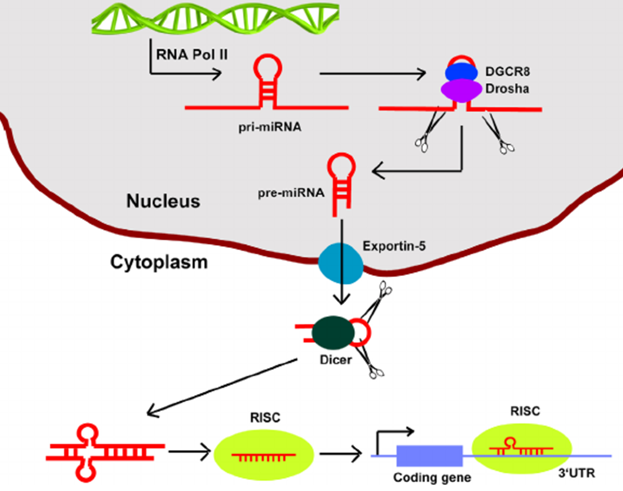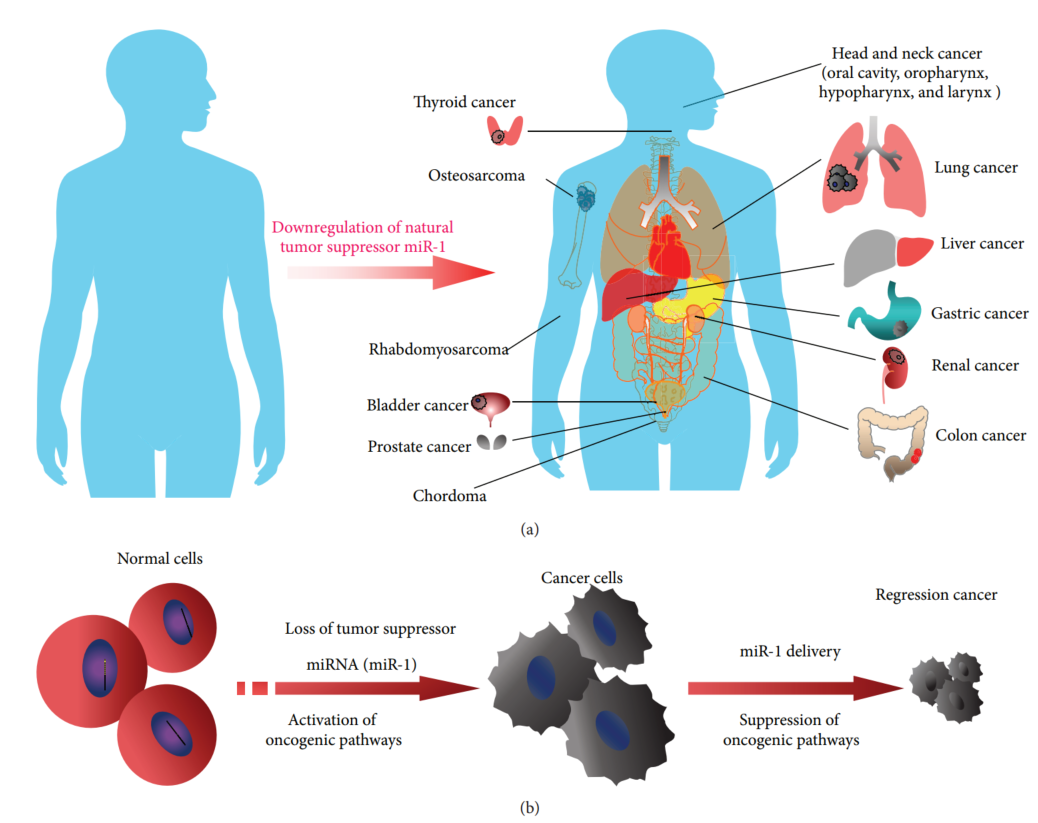As a respected industrial pioneer in the in vitro diagnostics (IVD) antibodies development, Creative Biolabs offers custom service to develop IVD antibodies for the miR-1 marker. Our high-quality IVD antibodies are available for diagnosis of several diseases, such as cardiovascular disease and cancer.
MicroRNAs (miRs) are a group of small (18-25 ribonucleotides), non-coding RNAs which regulate post-transcriptional gene silencing by interacting with their 3' UTR in a sequence-specific manner. Until now, more than 300 miRNAs have been discovered, among which miR-1 and miR-133 are regarded as muscle-specific ones. miR-1 is encoded by the miR-1-133 cluster that contains two copies in the human genome forming alike mature miR sequences for miR-1 and miR-133. miR-1 firsthand mediates gap junction-forming and iron channel proteins. It reduces ventricular conduction by downregulation of Cx43 that formed in working myocardium and facilitates coupling of the high-speed conduction pathway to the around myocytes. Besides, miR-1 has been involved in the identification of the differentiated state of muscle cells and myogenesis. Neonatal hearts display raising expression of miR-1 with age, and mainly higher levels are kept in adult hearts as compared to neonatal hearts, revealing that it might have cellular or pathophysiological functions other than myogenesis.
 Fig.1 Diagrammatic representation of microRNA genesis. microRNAs represent a newly identified class of non-coding RNAs that play critical roles in gene expression regulation.1
Fig.1 Diagrammatic representation of microRNA genesis. microRNAs represent a newly identified class of non-coding RNAs that play critical roles in gene expression regulation.1
miR-1 Maker of Cardiovascular
Cardiovascular disease (CVD) is a set of diseases related to the heart or blood vessels. CVD includes coronary artery diseases (CAD) such as myocardial infarction and angina, and many other diseases such as heart failure, cardiomyopathy, rheumatic heart disease, etc. In skeletal muscle and heart tissue miR-1 is broadly expressed, and it is overexpressed in individuals with coronary artery disease. It was proven that expression of miR-1 was lost in myotonic dystrophy patients, in accordance with upregulation of its targets Cx43 and CAV1.2 which may due to arrhythmia occurred in these patients. Besides, the expression of miR-1 is notably decreased in patients with chronic atrial fibrillation, and it may also act a role in ischemic arrhythmia in patients with coronary heart disease. Furthermore, miR-1 is observably downregulated in hypertrophic cardiomyopathy mouse model and end-stage heart failure patients. Therefore, miR-1 plays an important pathophysiological role in the heart and is a potential CVD marker.
miR-1 Maker of Cancer
Cancer is a class of diseases related to abnormal cell growth with the potential to aggress or spread to other parts of the body. A number of miRs have been identified to show tumor suppressor activity, nevertheless, others act like oncogenes. It was demonstrated that miR-1 and miR-133, as well as miR-206 (a functional homolog of miR-1) are three of the most continually downregulated miRs in solid human cancers. Various types of research have proven that miR-1 plays as a tumor suppressor in prostate cancer by affecting multiple cancer-related processes and by restraining cell proliferation and motility. In addition, other studies demonstrated that serum miR-1 was a novel independent parameter of OS in hepatocellular carcinoma (HCC) patients, and it may enhance the predictive value of typical HCC staging scores.
 Fig.2 Dysregulated miR-1 levels in human cancers and potential treatment strategies.2
Fig.2 Dysregulated miR-1 levels in human cancers and potential treatment strategies.2
With the rapid development of IVD market, IVD antibodies are widely used for the diagnosis of a variety of diseases. Creative Biolabs offers custom development services of high-affinity IVD antibodies for the miR-1 marker to meet every customer's requirements.
Creative Biolabs also provides other IVD antibodies. Please feel free to contact us for more information and a detailed quote.
References
- Bian, Shan, and Tao Su. "Noncoding RNAs in Neural Stem Cell Development". Neural Stem Cells and Therapy, InTech, 15 Feb. 2012. Crossref, doi:10.5772/29434.
- Han, Chao, et al. "Role of microRNA‐1 in human cancer and its therapeutic potentials." BioMed research international 2014.1 (2014): 428371.
For Research Use Only.

